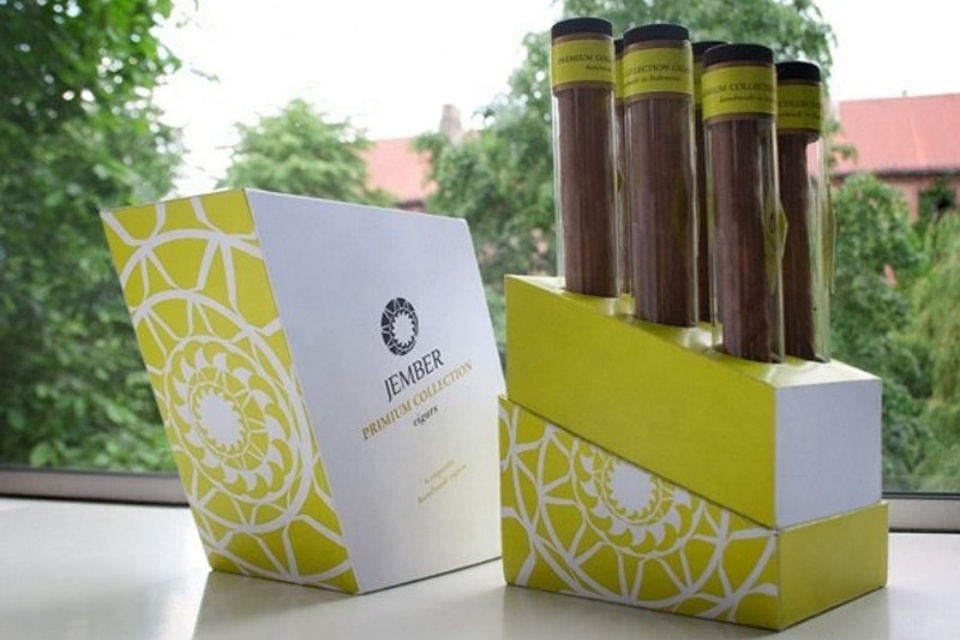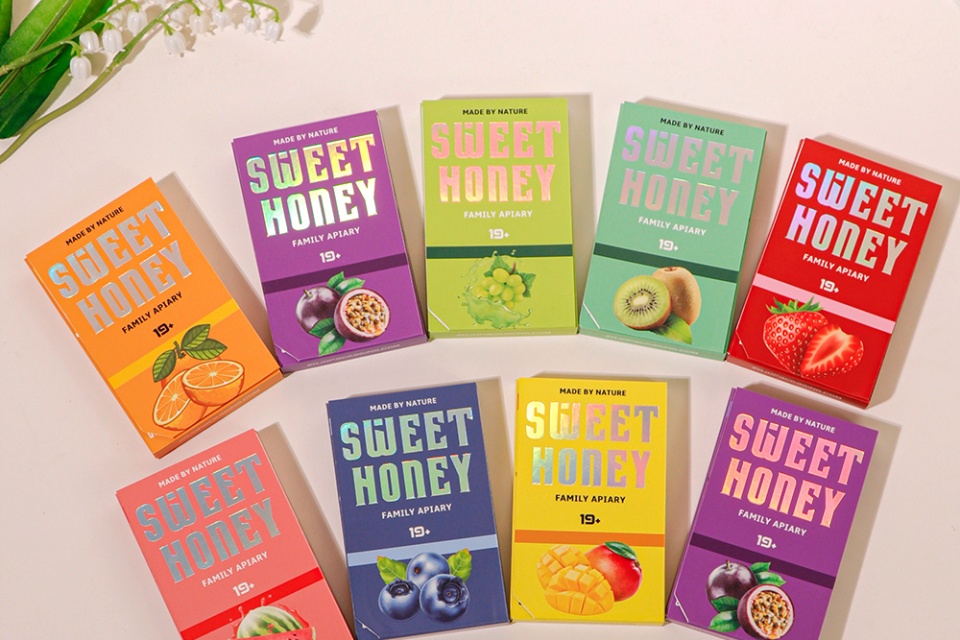Lastest News
Child-Resistant Packaging Solutions For Cannabis Products
Child-Resistant Packaging Solutions For Cannabis Products
Summary
Child-resistant packaging solutions for cannabis products are essential safety measures designed to prevent accidental ingestion by children, a growing concern as cannabis legalization expands. Following the implementation of the Cannabis Act in Canada on October 17, 2018, child-resistant packaging became a mandatory requirement to protect minors from potentially hazardous substances, aligning with broader public health objectives. This necessity has made child-resistant packaging a notable aspect of the legal cannabis market, influencing both regulatory frameworks and consumer expectations.
These packaging solutions incorporate various mechanisms and materials to enhance safety while ensuring usability for adults. Key design features include push-down and turn caps, squeeze lock closures, and biodegradable materials that meet environmental standards. The market has seen innovations such as smart packaging technologies, which integrate tamper-evident indicators and QR codes, further enhancing safety and traceability for consumers and regulatory bodies alike. These developments highlight the industry's response to both regulatory pressures and consumer demand for sustainability.
Controversies surrounding child-resistant packaging primarily involve balancing safety with accessibility. Many manufacturers face challenges in creating packaging that effectively deters children while remaining user-friendly for adults, particularly seniors and those with disabilities. Moreover, the evolving landscape of regulations presents difficulties in compliance, as manufacturers must navigate varying requirements across jurisdictions while ensuring that their packaging solutions are effective and economically viable.
Overall, the significance of child-resistant packaging solutions in the cannabis industry is underscored by their role in promoting consumer safety, meeting legal obligations, and adapting to market trends that prioritize sustainability and technological integration. As the cannabis market continues to grow, ongoing innovation in child-resistant packaging will remain critical to safeguarding public health and preventing accidental poisonings among children.
Legal Framework
Overview of Cannabis Legislation in Canada
Canada was the first major industrialized nation to establish a legal and regulated framework for the use of cannabis for non-medical purposes, officially implementing this on October 17, 2018. The Cannabis Act was introduced to provide a structured approach to the production, distribution, sale, import, export, and possession of cannabis, with a primary focus on public health and safety. This legislation aims to protect the health of young individuals by restricting their access to cannabis while also promoting a competitive legal market to displace illegal operations.
Regulatory Amendments and Compliance
In response to the evolving cannabis industry, Health Canada has initiated amendments to existing regulations to streamline processes and reduce the administrative burden on license holders. These amendments allow for certain activities to be conducted without a license and modify reporting requirements, ultimately saving time and resources for both the government and cannabis businesses. For example, the repealing of annual report requirements on promotional activities and the removal of specific security obligations are designed to enhance operational efficiency.
Moreover, the amendments will not compromise Canada's adherence to international drug control treaties, ensuring compliance with conventions such as the 1961 Single Convention on Narcotic Drugs.
Child-Resistant Packaging Regulations
One critical aspect of the legal framework involves the mandatory use of child-resistant packaging for cannabis products. This requirement is designed to prevent accidental ingestion by children and aligns with broader safety regulations concerning hazardous substances. The regulations stipulate that all cannabis products must be packaged in a manner that meets specific safety standards, thereby ensuring consumer protection and public safety.
Implications for Industry Participants
The cannabis industry in Canada faces various challenges, including economic difficulties that threaten the objectives of the Cannabis Act. To support industry sustainability, the regulations not only focus on compliance but also on facilitating access to legal cannabis while maintaining strict safety protocols. Compliance measures may include warnings, amending or revoking licenses, and imposing administrative monetary penalties, thereby reinforcing the importance of adherence to the established legal framework.
Types of Child-Resistant Packaging
Child-resistant packaging is designed to be difficult for children under five years old to open, thereby preventing access to potentially harmful substances. There are two primary types of child-resistant packaging: single-use packages and resealable continually child-resistant packages. Various forms of child-resistant packaging are utilized across the cannabis industry, each tailored to specific product types.
Mylar Bags
Child-resistant Mylar bags are commonly used for edible cannabis products. These bags effectively limit exposure to moisture and oxygen, which can degrade product quality over time. They are durable and customizable, making them suitable for items such as infused candies and gummies. However, they are not ideal for concentrates, and cannabis flowers can be easily crushed within them.
Tubes
Child-resistant tubes are designed primarily for storing vape cartridges, pre-rolls, and cannabis extracts like RSO (Rick Simpson Oil) and distillate. These tubes feature advanced child-resistant technology, as opposed to simple flip-tops, providing enhanced security. Custom labeling can also be added to enhance branding and aesthetic appeal.
Boxes
Child-resistant boxes serve as another packaging option, particularly for various cannabis products. They provide an extra layer of protection while maintaining user accessibility for adults. Packaging experts can create effective child-resistant boxes that are visually appealing, allowing cannabis manufacturers to comply with safety regulations while still presenting an attractive product.
POP VAC Jars
POP VAC jars are notable for their balance of child resistance and user-friendliness. They are ideal for storing cannabis concentrates, ensuring freshness and accessibility for adults without compromising safety for children.
Glass Packaging
For those preferring glass, child-resistant glass bottles and jars are available. These include amber glass jars with black child-resistant caps, which provide UV protection for light-sensitive products. Options also include Boston round glass bottles equipped with child-resistant droppers, allowing for precise dosing of liquid cannabis products. Glass packaging is both stylish and effective in preventing children from accessing dangerous substances.
Plastic Packaging
Plastic child-resistant bottles are widely used in the medical marijuana sector. These bottles incorporate locking mechanisms that require pressure and dexterity to open, making them challenging for young children. Available in various sizes and styles, these bottles often feature airtight seals that help preserve product freshness and potency, making them a convenient choice for consumers.
Design Features
Overview of Child-Resistant Packaging
Child-resistant packaging (CRP) plays a crucial role in ensuring the safety of cannabis products, particularly given the stringent regulatory frameworks that govern their distribution. These packaging solutions are specifically designed to prevent children from accessing potentially harmful substances, which includes a variety of mechanisms and materials tailored for compliance with safety standards.
Key Design Elements
Mechanisms of Child Resistance
Effective child-resistant packaging typically incorporates several standard features that enhance safety.
- Push-down and turn caps: These caps require simultaneous movements that are a generally too complex for young children but manageable for adults.
- Push-to-close zippers: Designed to prevent accidental openings, these closures necessitate a specific action to ensure they are securely sealed.
- Squeeze lock closures: These locks demand a combination of dexterity and understanding of the mechanism, effectively deterring children from accessing the contents.
Material Considerations
The selection of materials is a critical aspect of child-resistant packaging design.
- Biodegradable and recyclable materials: As environmental concerns grow, many brands are shifting towards sustainable options while maintaining functionality.
- Sturdy materials: The durability of the packaging is paramount; low-quality materials can be easily compromised by children. For instance, robust paperboard designs are becoming increasingly popular for their effectiveness in both safety and environmental impact.
Usability for Adults
In addition to child resistance, the packaging must remain user-friendly for adults, particularly seniors who may have dexterity issues.
- Clear instructions: Packaging that includes straightforward guidance—often aided by visual cues like arrows—can reduce the likelihood of confusion among adult users.
- Intuitive mechanisms: Systems that rely on easily comprehensible actions, rather than complex multi-step processes, are preferable for maintaining accessibility for seniors.
Compliance with Regulatory Standards
The design of child-resistant packaging for cannabis products is heavily influenced by legal requirements aimed at minimizing risks associated with ingestion by children. Manufacturers must rigorously test their packaging solutions to ensure they meet safety regulations, which often involve assessing the functionality of the mechanisms under real-world conditions. This compliance is crucial not only for product safety but also for maintaining brand reputation and avoiding penalties related to regulatory breaches.
Challenges and Considerations
Effectiveness and User Experience
One of the primary challenges in designing child-resistant packaging is ensuring that it effectively prevents access by children while remaining user-friendly for adults, particularly seniors and individuals with disabilities. The goal is to create solutions that not only meet safety requirements but also enhance the overall product experience for legitimate users. Innovations in packaging design include mechanisms such as push-and-turn designs, squeeze-and-pull systems, and button-activated releases, all aimed at improving accessibility for adults while maintaining child resistance.
Regulatory Standards
Manufacturers must navigate a complex landscape of regulatory standards that dictate the requirements for child-resistant packaging. Products containing hazardous substances are required to use specific types of closures, with regulations varying based on the toxicity level of the contents. The amendments and guidance from regulatory bodies, including Health Canada and the Consumer Product Safety Commission, emphasize that while packaging can significantly reduce the risk of accidental poisoning, it cannot be considered entirely childproof. This creates a challenge for brands to balance compliance with usability, as overly complex packaging mechanisms can hinder adult access.
Material Choice and Sustainability
Another significant consideration is the choice of materials used in child-resistant packaging. The growing consumer demand for environmentally friendly products has led manufacturers to prioritize sustainable materials, such as bio-based and recyclable options. However, the integration of sustainable materials must not compromise the safety and effectiveness of the packaging. Striking a balance between sustainability, safety, and cost-efficiency remains a challenge for many companies in the industry.
Design-Related Challenges
Designing child-resistant packaging involves addressing multiple technical and ergonomic challenges. For example, while creating child-resistant solutions, manufacturers must also consider the production costs associated with sustainable materials and advanced designs. This complexity is compounded by the need to maintain safety without frustrating legitimate users, which is essential for ensuring compliance and fostering consumer trust.
Identifying the Right Size for the Child
Finally, it is crucial for manufacturers to consider the diverse range of children's sizes and capabilities when developing child-resistant packaging. Packaging solutions must be effective against children under five years old, who are the primary concern for accidental poisoning incidents. This necessitates a thorough understanding of child behavior and interaction with packaging to ensure that products are truly effective in preventing access while remaining convenient for adult users.
Market Trends
The child-resistant packaging solutions for cannabis products are experiencing significant evolution, driven by a combination of regulatory demands, consumer preferences, and technological advancements.
Regulatory and Safety Considerations
Since the implementation of the Cannabis Act in Canada in 2018, there has been a notable shift in the legal cannabis industry towards stringent safety measures. The Act aims to protect public health, particularly the health of minors, which necessitates the use of child-resistant packaging (CRP) for cannabis products. In the United States, the Poison Prevention Packaging Act mandates that certain substances, including cannabis, must be marketed in special packaging designed to be difficult for children to open.
Integration of Technology
A significant trend in the market is the integration of smart technologies into child-resistant packaging. Manufacturers are increasingly incorporating features such as tamper-evident indicators, RFID tags, and QR codes to enhance security and provide real-time information regarding packaging integrity. This technological integration not only improves consumer safety but also facilitates product traceability and authentication, essential factors in the cannabis and pharmaceutical sectors.
Demand for Sustainability
Sustainability has emerged as a critical consideration for consumers, with over 72% preferring eco-friendly packaging options. As a result, cannabis brands are adopting biodegradable materials, reusable and refillable packaging, and compostable pouches to align with consumer preferences and regulatory requirements. The growing demand for sustainable packaging solutions reflects an increased awareness of environmental impact, pushing companies to innovate while enhancing their brand reputation.
Market Growth Projections
The cannabis packaging market is projected to reach $1.99 billion by 2025, with a compound annual growth rate (CAGR) of 15.46% through 2030. This growth is fueled by ongoing legalization in various jurisdictions and the diversification of cannabis products, which range from edibles to topicals. As the market expands, there will be a continuous need for innovative packaging solutions that meet both safety regulations and consumer expectations for sustainability and technology integration.
Competitive Dynamics
Competitive strategies within the child-resistant packaging market focus on technological advancements and customer-centric solutions to capture market share in this growing sector. Companies are investing in sustainable materials and automation in packaging machinery to improve production efficiency and comply with evolving safety regulations. The emphasis on smart packaging solutions and sustainability reflects broader trends in consumer behavior and regulatory frameworks across global markets.
Case Studies
Successful Implementation of Child-Resistant Packaging
Numerous brands have successfully integrated child-resistant (CR) packaging solutions into their cannabis products, demonstrating effectiveness in promoting safety and compliance with regulatory standards. A notable example is Fresh-Lock's Child-Guard Track & Slider closure for flexible pouches, which achieved certification under ASTM D3475. This closure successfully met Title 16 CFR 1700 standards in testing by accredited agencies, showcasing its efficacy in deterring children while remaining accessible for adults.
Innovations in Design
Another significant case involves brands that have embraced innovative designs that prioritize user-friendliness without compromising safety. By focusing on straightforward, intuitive mechanisms, companies have created packaging that not only meets regulatory requirements but also appeals to their target demographic. The best systems are designed to be easily explained to users yet challenge enough to prevent children from accessing harmful substances. This design philosophy has led to products that are well-received in the market, reflecting a balance between safety and user experience.
Market Dynamics and Consumer Awareness
The rising awareness regarding child safety has also influenced the packaging strategies employed by cannabis brands. As parents, caregivers, and healthcare providers become more conscious of the risks associated with product accessibility, the demand for safer packaging solutions has intensified. Public awareness campaigns highlighting the dangers of improperly packaged products have further driven the push for child-resistant packaging. This trend aligns with the original goals of the Poison Prevention Packaging Act, emphasizing the importance of creating an additional barrier against accidental poisonings.
Challenges and Solutions
While many companies have achieved success, challenges remain in navigating the complexities of child-resistant packaging regulations. Brands are advised to adopt a proactive approach by integrating child-resistant considerations early in the product development process, thereby avoiding costly retrofitting later on. Conducting preliminary testing with prototypes and verifying supplier certifications are also critical steps to ensure compliance and safety. By addressing these challenges with strategic implementation, brands can enhance their product offerings and reinforce their commitment to consumer safety.
Perspectives from Stakeholders
Regulatory Feedback
Stakeholders have expressed a range of perspectives regarding child-resistant packaging solutions for cannabis products, particularly in light of evolving regulatory requirements. Health Canada has sought stakeholder input through various consultations, most notably a Notice of Intent published on March 25, 2023, aimed at streamlining regulatory requirements within the cannabis sector. Feedback collected during these consultations highlighted the need for clarity in regulatory expectations and the desire for more flexible packaging options that meet safety standards without imposing excessive burdens on businesses.
Industry Considerations
Industry participants have raised concerns about the complexities involved in complying with child-resistant packaging regulations. Many brands are cautious about overdesigning their packaging, as cluttered designs can confuse consumers and dilute brand identity. Moreover, there is a strong emphasis on sustainability; stakeholders have urged the adoption of sustainable materials that align with both functional requirements and environmental goals. The use of materials such as Mylar, glass, and biodegradable options has been discussed, with stakeholders weighing the benefits of cost-effectiveness against the need for premium quality and environmental responsibility.
Market Dynamics
As the cannabis packaging market matures, competitive dynamics have been shaped by technological advancements and regulatory compliance. Stakeholders are increasingly focused on innovations that enhance usability while adhering to safety standards. For instance, manufacturers are investing in AI-powered solutions to improve production quality and ensure that packaging meets child safety regulations effectively. Furthermore, new developments, such as recyclable zipper systems and ergonomic pouch designs, reflect a shift towards consumer-centric solutions that prioritize safety and ease of use.
Categories
Latest News
Contact Us
Contact: Aaron Lee
Phone: +8613570866244
Tel: +8675529490260
Add: Li Songlang 2nd Industrial Zone,No.18,FengTang Rd,Guangming New District


